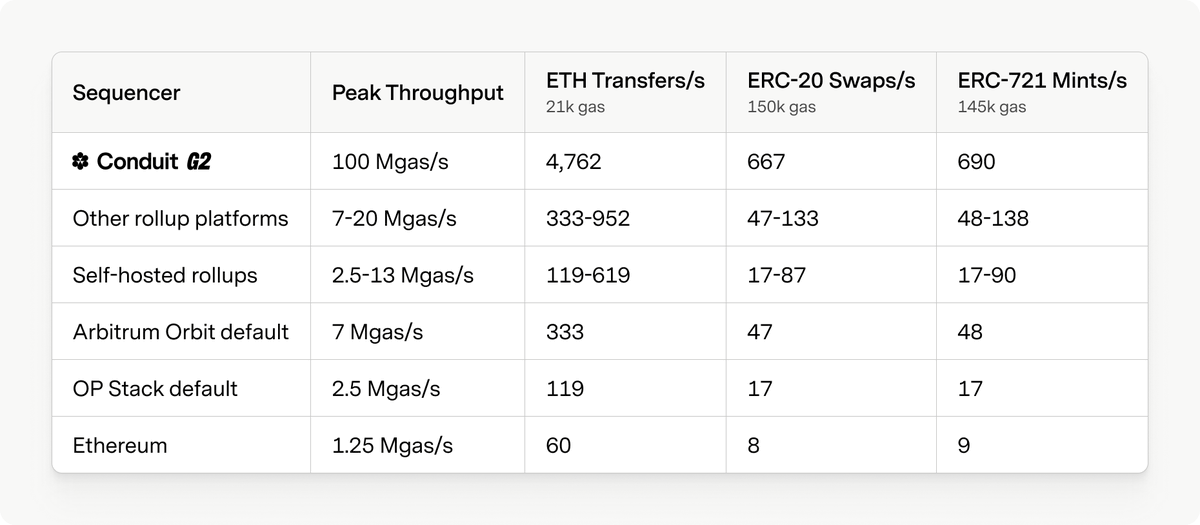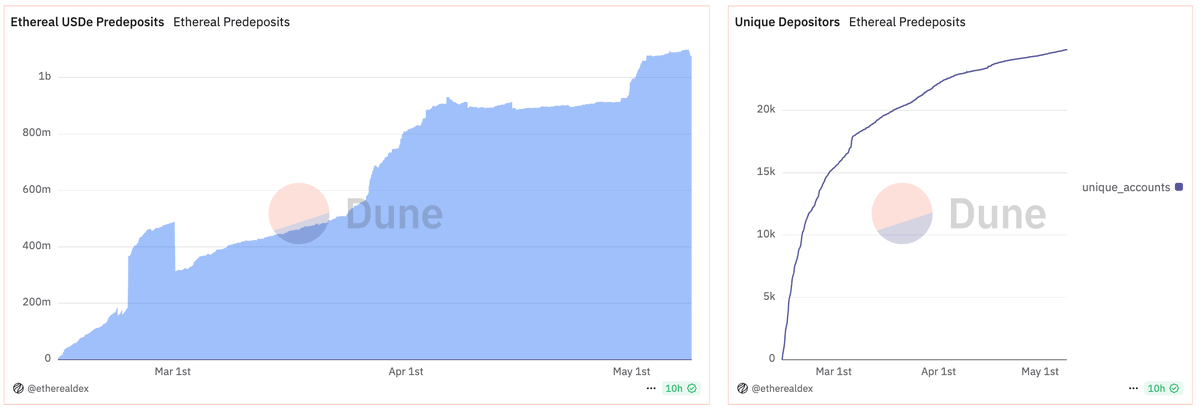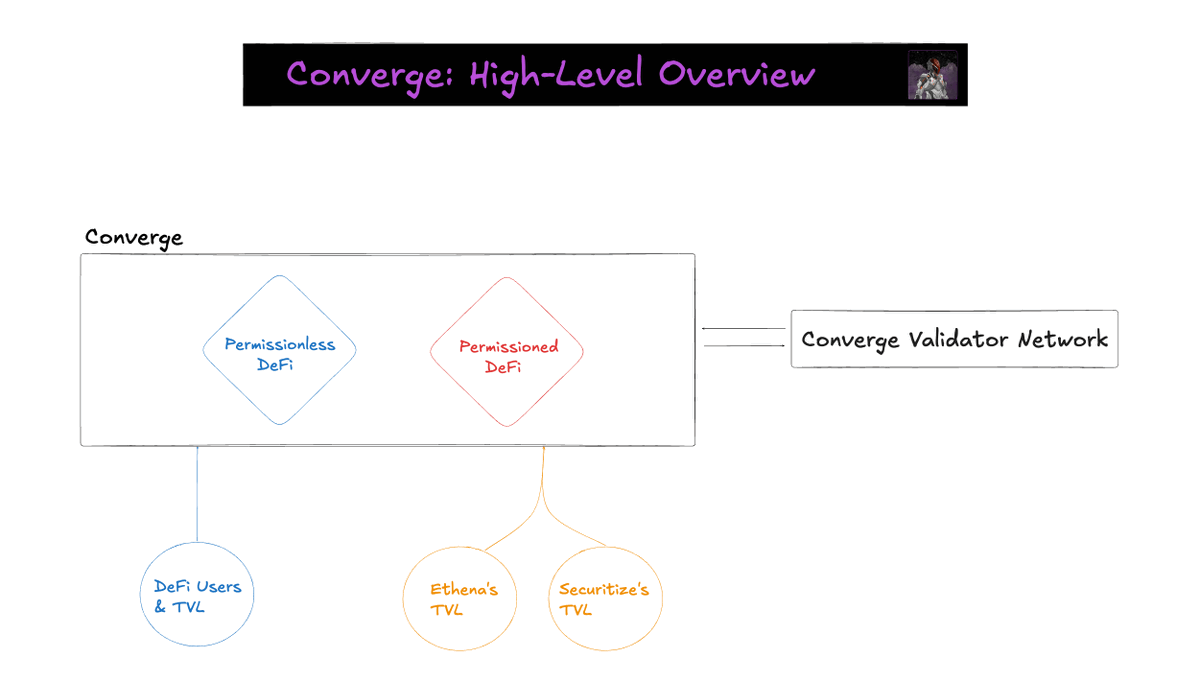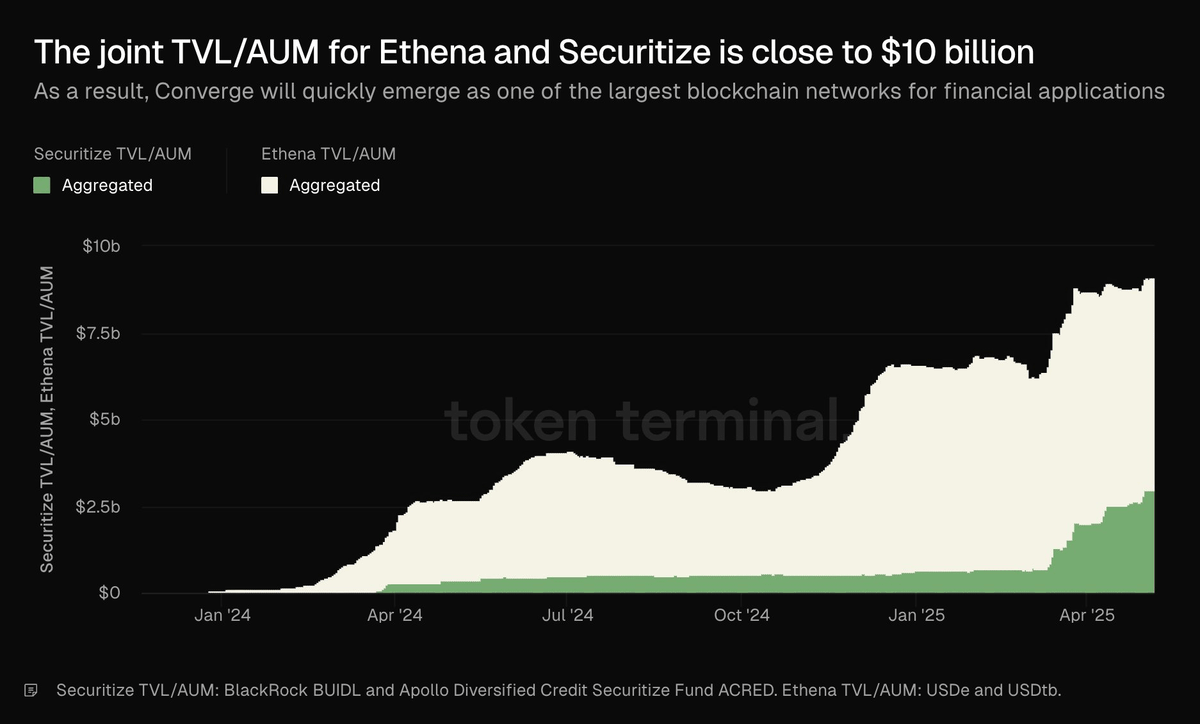A very very good read on actually what’s up with Ethena and Converge
Shoutout to sir @Moomsxxx it’s excellent !
A giant is entering the market.
It'll rank among the 8 biggest chains on Day 1.
And it might become a Top 3 ecosystem by the end of 2025.
In the 5th part of this series, we'll focus on @convergeonchain, built by Securitize, the biggest RWA issuer, and Ethena, one of the biggest companies in DeFi.
A hybrid chain capable of hosting both permissionless and permissioned apps, enabling:
• Permissionless smart contracts deployment
• Unrestricted access for users
• DeFi composability
• Traceability of financial flows
• Monitoring of onchain activity
• KYC/KYB on users when desired
But now, as we do with each chain in this series, let's dive into the infra and tech.
⚙️ THE TECH
Converge’s infrastructure is built to offer hyper-fast execution, with 100ms block times and 100 MGas/s throughput, thanks to the following integrations:
1.) @conduitxyz G2 Sequencer
Introduced in October, G2 is 10x more powerful than default sequencers used by all rollup frameworks.
Although many argue that we've built enough infra and we need to focus on apps, a fundamental issue has consistently held builders back:
Lack of onchain computing.
Simply, the more complex the application or the larger the user base is, the heavier the pressure on the network is.
And it's not about TPS, as many refer to, but rather about the data contained in those transactions.
For instance, a token swap is much easier for a chain to process than a transaction representing video game activity.
With this in mind, Conduit's G2 sequencer is capable of handling 50-100 Mgas/s (Megagas per second, a measuring unit that accounts for both the number of transactions and their complexity), which, as mentioned previously, is vastly higher than any other existing infra.
(Check image n°1 from Conduitxyz's blog post)
Converge leverages this beauty of tech to integrate two key components to push latency down and performance up:
• Parallel Execution - processes multiple transactions at once rather than sequentially.
• Mini-blocks - instead of waiting to build full blocks, G2 emits mini-blocks as transactions arrive, enabling validators to start processing them immediately.
2.) Optimized State Storage
Converge nodes will use a flat, path-based storage model backed by high-performance databases, as described in the documentation.
In simple terms, the data will be organized like files on a computer, making it much easier to find, read, update, or delete information quickly.
This setup also allows multiple validators and users to access the same data simultaneously without delays and, importantly, without needing to pause the system.
3.) Stylus Support
In addition to the EVM, Converge will support Stylus, a WASM-based execution engine that lets developers deploy smart contracts in multiple languages—including Solidity, Rust, C, C++, Go, Sway, Move, and Cairo.
Stylus enables much faster execution and lower gas costs, especially for compute-heavy operations.
This means developers can launch apps with up to 100x better performance than standard EVM-based ones.
4.) Celestia as DA Layer
At launch, Converge will use Celestia for data availability, making it a Validium, which is a type of rollup that stores data off the Ethereum mainnet.
This approach allows for higher scalability (with intrinsic risks) as the chain leverages the best-performing DA on the market.
About this, Celestia currently supports 128MB block sizes on testnet and has a roadmap to scale up to 1GB blocks.
🛡️ CONVERGE'S SECURITY BACKBONE: THE VALIDATOR NETWORK
The key differentiator from any other chain is the Converge Validator Network (CVN), which will serve as a crucial layer of security and governance.
Unlike traditional validator sets focused on consensus or data availability, the CVN acts as a security council with the authority to intervene during threats to user funds or network integrity.
It's designed to shield the network from anything that goes from malicious cross-chain messages to oracle manipulation, smart contract bugs, and so on.
To participate in the CVN, validators must stake $ENA, Ethena’s governance token. In exchange, they earn a share of the transaction fees and other rewards (TBD).
Ultimately, while Converge leverages Ethereum's base security, its validator network adds an extra layer of protection, making the chain highly secure for institutions to operate.
⚡ ETHEREAL
Thanks to Converge’s high throughput, the team can target another market with proven PMF: derivatives DEXs.
The prime reason for Hyperliquid's success is the super smooth UX it provides, made possible by the underlying infrastructure.
Ethereal, the DEX built on top of Converge, aims to reach 1 million orders per second, five times more than what Hyperliquid currently handles.
The DEX, which will support both spot and perpetual trading, will be built as a dedicated appchain on top of Converge, thus having its own dedicated execution environment while still posting proofs on Converge.
Other applications that need their own execution environment can also deploy their own networks that settle down to Converge.
With Ethereal, the Ethena ecosystem would cover every major product vertical with proven PMF in crypto:
• Stablecoins
• DEXs
• Perp DEXs
• Tokenized RWAs
• Rollups
Lastly, @etherealdex has already surpassed $1B in USDe deposits, with 21.4% of all USDe supply now being locked into the platform.
(Check image n°2 from @etherealdex’s Dune dashboard)
🧩 PERMISSIONLESS BY DEFAULT, COMPLIANT BY DESIGN
As mentioned in the beginning, Converge utilizes a hybrid model: the base layer is fully permissionless, but developers can opt into permissioned features at the application or asset issuer level.
This is especially relevant for RWA applications.
(Check image n°3)
Note how the network itself is permissionless. Thus, permissioning is not enforced by the validators or contributors.
This structure allows developers to launch freely while meeting the compliance needs of the tradFi institutions present on the network, whenever that is required.
On top of that, the second major benefit of building on Converge is the access to the $8.28B+ combined TVL of @ethena_labs and @Securitize.
(Check image n°4 by @tokenterminal)
Furthermore, the chain leverages the strong networks of Ethena and Securitize to bring in blue-chip apps to deploy from day 1, including:
• @maplefinance
• @aave
• @pendle_fi
• @MorphoLabs
• others
Other notable protocols such as @LayerZero_Core, @wormhole, @PythNetwork, and @redstone_defi will also support Converge from day one, providing infra for cross-chain messaging, bridging, and price feeds.
In conclusion, Converge seems well-positioned to enter the market and quickly establish itself as a hub for DeFi and RWA.
We all know how important liquidity is for enabling new DeFi use cases and developing a wide ecosystem. At the same time, reputation and strong ties with institutions are critical to a good RWA ecosystem.
Ethena and Securitize excel on both fronts and thus have high chances of nailing down the growth and distribution of Converge and its products.




13.28K
19
The content on this page is provided by third parties. Unless otherwise stated, OKX TR is not the author of the cited article(s) and does not claim any copyright in the materials. The content is provided for informational purposes only and does not represent the views of OKX TR. It is not intended to be an endorsement of any kind and should not be considered investment advice or a solicitation to buy or sell digital assets. To the extent generative AI is utilized to provide summaries or other information, such AI generated content may be inaccurate or inconsistent. Please read the linked article for more details and information. OKX TR is not responsible for content hosted on third party sites. Digital asset holdings, including stablecoins and NFTs, involve a high degree of risk and can fluctuate greatly. You should carefully consider whether trading or holding digital assets is suitable for you in light of your financial condition.


